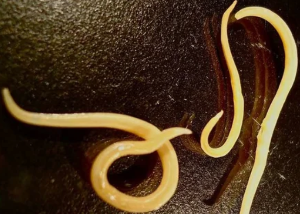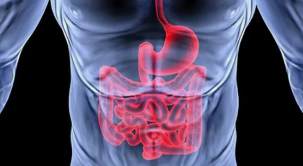Before you start the treatment of parasites, it is important to accurately determine which species is present in the body. It is necessary to find effective methods of treatment, as most medications developed specifically to get rid of a specific species of worms.

Are worms protozoa
Sometimes you can hear the phrase that the patient is infected with protozoa worms. You need to understand that the simplest one is exclusively single-celled microorganisms, or at least organizing the colony. But they are never multicellular as worms, and worms.
The simplest of all the processes occur within the cell cytoplasm and cell nuclei, while worms have anatomical organization is much more difficult: they have different bodies that perform special physiological functions. Therefore, to classify worms the simplest is fundamentally wrong.
Sometimes called helminths protozoan parasites in comparison to insects: bedbugs, lice, etc., as the latter are much higher on the evolutionary ladder. In this sense, the name of worms protozoa allowed.
- Symptoms, treatment and prevention of sarcocystosis in humans.
- Are there black worms in humans.
- How are the eggs of the worms.
The most common parasites
The most common endoparasites are, of course, helminths (worms), which, according to various estimates, infected more than 80% of the world population.
A huge number of these parasites are divided into basic types:
- nematodes – round worms (roundworm, pinworm, Trichinella, whipworm, etc.);
- cestodes – tapeworms (lantecy, pork and beef tapeworm, tapeworm, etc.);
- trematodes – worms-flukes (liver, blood, lung, and flukes that live in the intestines).
Sometimes you can find a more General classification, according to which all types of parasites people are divided into:
- luminal (intestinal), parasitic in the intestine;
- tissue, localized in other organs and tissues.
Consider a brief description of the most common types of worms.
Roundworms (nematodes)
- Roundworm – roundworms are the most common length from 20 to 40 cm, parasites in the small intestine, but first migrate in the human body, affecting the blood and respiratory system. Along with these intestinal parasites can be detected in the liver and gall bladder, heart and lungs. A common symptom of ascariasis and allergic reaction.
- Pinworms – small worms, up to 1 cm, affecting the intestines and lead to enterobiasis disorder of the gastrointestinal tract, exhaustion, sleep disorders, etc. the Characteristic symptom of pinworms is itching in the anus, where they lay their eggs.
- Trichinella – these microscopic worms (their size only a few millimeters) lead to severe diseases – trichinosis, which can if untreated lead to death. Adult species live in humans in the muscles (respiratory, face, etc.), causing muscle pain, fever, swelling, allergic skin rash.
- Vlasoglavy – worms small (length up to 4.5 cm, with the front part of the body
in the form of a thread), larvae of which cause trihozefalez with diarrhea, acute abdominal pain and other symptoms resembling appendicitis. As a result of intoxication anemia.
Tapeworms (cestodes)
- A tapeworm, body length of which reaches up to 10 m, leads to the development of difillobotrioz with nausea, weakness, vomiting, unstable chair, asthenia and anemia.
- Pork tapeworm has a length of from 3 to 8 m, a parasite mainly in the small intestine and causes two diseases: taeniasis with dyspeptic, asthenic-neurotic and abdominal syndromes, and cysticercosis with intoxication, intestinal, allergic and respiratory symptoms. Depending on the localization of cysticerci affects the muscles, brain, heart, eyes, etc.
- Beef tapeworm whose length may reach 18 m, and causes the beef tapeworm infection is considered to be one of the most dangerous types of worms. If you do not do deworming, it can stay in the body for up to 18-20 years! Is localized in the large intestine, causes severe intoxication with their waste products, as well as diarrhea, nausea, vomiting, abdominal pain, anemia, allergic reactions and problems with the nervous system.
- Dwarf tapeworm length of only 1.5-5 cm source gimenolepidoz with diarrhoea, pain and astheno-neurotic syndromes affecting primarily the digestive and nervous system, and liver.
- Echinococcus is considered to be the smallest tape worm – its length is from 2.5 to 8, rarely 9 mm, but the infection it has terrible consequences such as liver and lung, where they form cysts and tumors causing dysfunction of these organs.
Worms-flukes (trematodes)
- Liver Fluke or the liver Fluke is shaped like a sheet with a length of 30-50 mm and a width of 8-13 mm, has a suction Cup. It damages the sheath of the liver and clog the bile ducts that is able to completely block the flow of bile. Can lead to cirrhosis, jaundice and liver cancer.
- Cat (Siberian) - sucker or cat Fluke, a flat worm with a length of 4-13 mm. Localization – the ducts of the gallbladder, liver and pancreas. Causes opisthorchiasis with the development of gastritis, ulcers, pancreatitis, cholecystitis until liver cancer, which can lead to death.
- The lung Fluke has an ovoid shape, red-brown body with small spines, length from 7.5 to 12 mm with a width of 4-8 mm. Affects the lungs, causing inflammation, pleural effusion, focal fibrosis, and lung cancer. When the penetration into the brain causing encephalitis and meningoencephalitis.
- Shistosoma (blood flukes) – dioecious worms with a size of 1-2 cm, the eggs of which cause an increase in liver, spleen and lymph nodes, the formation of polyps in the intestine, diarrhea, granulomatous inflammation, leading to cancer of the bladder.
The diseases that they cause
The most dangerous parasites living in the human body, can provoke a variety of diseases. Very often, the disease provoked by a specific parasite, has the same name as him. Thus, various types of parasites in humans can cause the following diseases:
- certain parasites in man (flukes) trematode provoke;
- the cestodosis occur when you lose tapeworms;
- if an adult or child in the intestines are the round worms, nematodes that diagnose;
- leeches cause hirudins;
- Arctocephalus provoke skrebni.
However, the parasites in the human body can not hit one body. Depending on localization of parasites in the human body identify the following parasitic diseases:
- With the defeat of the eye may be onchocerciasis, demodicosis, cysticercosis, and myiasis;
- Diseases of the digestive tract that cause single-celled parasites and helminths – ascariasis, trichinosis, hookworm, enterobiasis, intestinal myiasis and metagonimus;
- Brain diseases – echinococcosis, toxoplasmosis, and cysticercosis alveococcosis;
- Dermatological disease – demodicosis, pediculosis, scabies, pulicosis, trombitas, ftiras;
- Lung pathology – hydatid disease, ascariasis, acariasis, alveococcosis, tomingas etc.;
- Diseases of the liver opisthorchiasis, alveococcosis, echinococcosis, clonorchiasis a;
- In the mouth, the ears and mouth parasites can cause different types of myiasis;
- Pathology of heart – dirofilaria and hydatid disease;
- Diseases of the genitourinary system – alveococcosis, urate miaz, echinococcosis;
- The pathology of vessels – filaretos and schistosomiasis.
Flat worms
Flat worms, or flukes (trematodes), have a characteristic leaf shape of the body. Their structure is very well organized — they have a digestive, excretory and nervous system. During the life cycle of their owners.
Widely used such kinds:
- Siberian Fluke (cat Fluke), or opisthorchis. The most common infection is through raw fish, which leads to a rather dangerous disease opisthorchiasis. Reproduction of the parasites occurs very quickly, which can cause serious consequences. Worms are yellowish, and their length can exceed 12 m. Anchored in the human body, these parasites provoke internal bleeding, break bile outflow, causes dysfunction of the pancreas. Dangerous effects: cholangitis suppurative type, ahilii, cholangiocarcinoma.
- Liver Fluke. Intermediate host are the representatives of the cattle, and man becomes infected by eating poorly processed meat of affected animals. As a result of infection develops the disease fascioliasis. The size of these worms is relatively small (not more than 5-6 cm), but they can provoke the dangerous disease: hepatic abscesses, cholangitis, hepatitis. Through the blood of the larva of the parasite can spread throughout the body.
- Shistosoma. The worm can reside in the blood vessels, consuming blood components. As a result, his life may develop varicose veins, tumors. The main symptom — an intense General intoxication.

In the human body can detect a huge number of different worms-parasites, able to gain a foothold in various internal organs. They cause chronic diseases that can cause severe pathology. At emergence of symptoms of helminth infections of any type you must consult a doctor to start appropriate treatment.
Beef tapeworm
Beef tapeworm can reach a length of 12 m. It is a hermaphrodite that can produce more than 100,000 eggs, they are excreted in the feces. The eggs get into the soil, then into plants, these plants eats cattle. In the animal body, the eggs become larvae, which are localized in the muscles. If a person eats infected beef, the larvae enter the intestine. From person to person, the larvae are not transmitted.
Adult worms have a head with four suckers, neck and body, consisting of segments. The number of segments is constantly growing, Mature segments can be separated from the worm to crawl out of the man's intestines out.
Beef tapeworm
The symptoms are nausea, vomiting, dyspepsia, increased salivation, dizziness, weakness, nervousness, fatigue, abdominal pain of uncertain localization, allergies, fluctuations in appetite.
In order to bring the beef tapeworm from the body, a schema, consisting of 3 stages: preparatory (cleansing the body), treatment with antiparasitic drugs, recovery (diet, herbal medicine).
Tape worms
The worms ribbon-type, or cestodes, are a variety of flat worms, the length of which can range from 2 mm to 10-12 m. the Body of these parasites has a specific structure — multiple segments, neck and head with suction cups (with hooks) for attaching to the wall. The cestode is a hermaphrodite and the eggs are in the segments. Nutrients the worm sucks through the entire surface of the body.
There are the following common types of tapeworms:

- Alveolar. May cause cholangitis and abscess, but also spread to spleen, muscle and brain.
- Cepni, or tapeworms. Beef tapeworm excites disease beef tapeworm infection, and is usually in the small intestine. Serious complications — cholecystitis, intestinal obstruction, appendicitis. This worm is able to lead to such consequences: atrophy of the intestinal sheath, Gunter glossitis, leukopenia.
Protozoan parasites
Toxoplasma gondii (Toxoplazma gondii) is a species of parasite, the primary host are cats. Can also be transported by warm-blooded animals and humans. A disease caused by Toxoplasma is called toxoplasmosis. The course of the disease is easy, with the exception of injury of the fetus inside the mother's womb during pregnancy, which poses serious consequences for both the mother and fetus, even death.
Amoeba simple unicellular organism that is considered to be one of the first creatures that lived on Earth. The disease caused by the amoeba, is called amebiasis. Intestinal infection, with a predominantly ulcerative lesions of the large intestine with the emergence of bloody diarrhea, a possible formation of secondary intestinal lesions having a tendency to chronic course.
Malaria parasites – the simplest single-celled creatures, in the development cycle of which the person is a temporary owner, and the mosquito – permanent. In the human body parasite Plasmodium is presented in 4 types:
- P. malarie – the four malaria;
- P. vivax — falciparum malaria;
- P. ovale — ovale three-day malaria;
- P. falciparum — tropical malaria;
The interval between bursts depends on the type of pathogen. Besides all this anemia, because the parasite affects the blood cells erythrocytes.
Giardia — protozoan pear-shaped, which have two nuclei and four pairs of flagella. The main source is pigs and human beings. Giardiasis is a common disease with a primary lesion of the liver and small intestine. The disease can occur in mild or severe form.
Trichomonas – flagellated single-celled organisms are pear-shaped, causes the disease trichomoniasis, sexually transmitted and affect the genitourinary system. It is perceptible that the sick men and women, but in men the disease is usually asymptomatic.
Trypanosoma is a genus of unicellular flagellate protists. Cause severe disease trypanosomiasis, a deadly threat to humans are sleeping sickness. A carrier of trypanosomes are bedbugs, tsetse flies. In the host's body the parasite multiplies under the skin, then penetrate the lymphatic system and blood. The majority of pathogens is located in the spinal cord and brain, where it destroys cells and secrete their toxins.



























